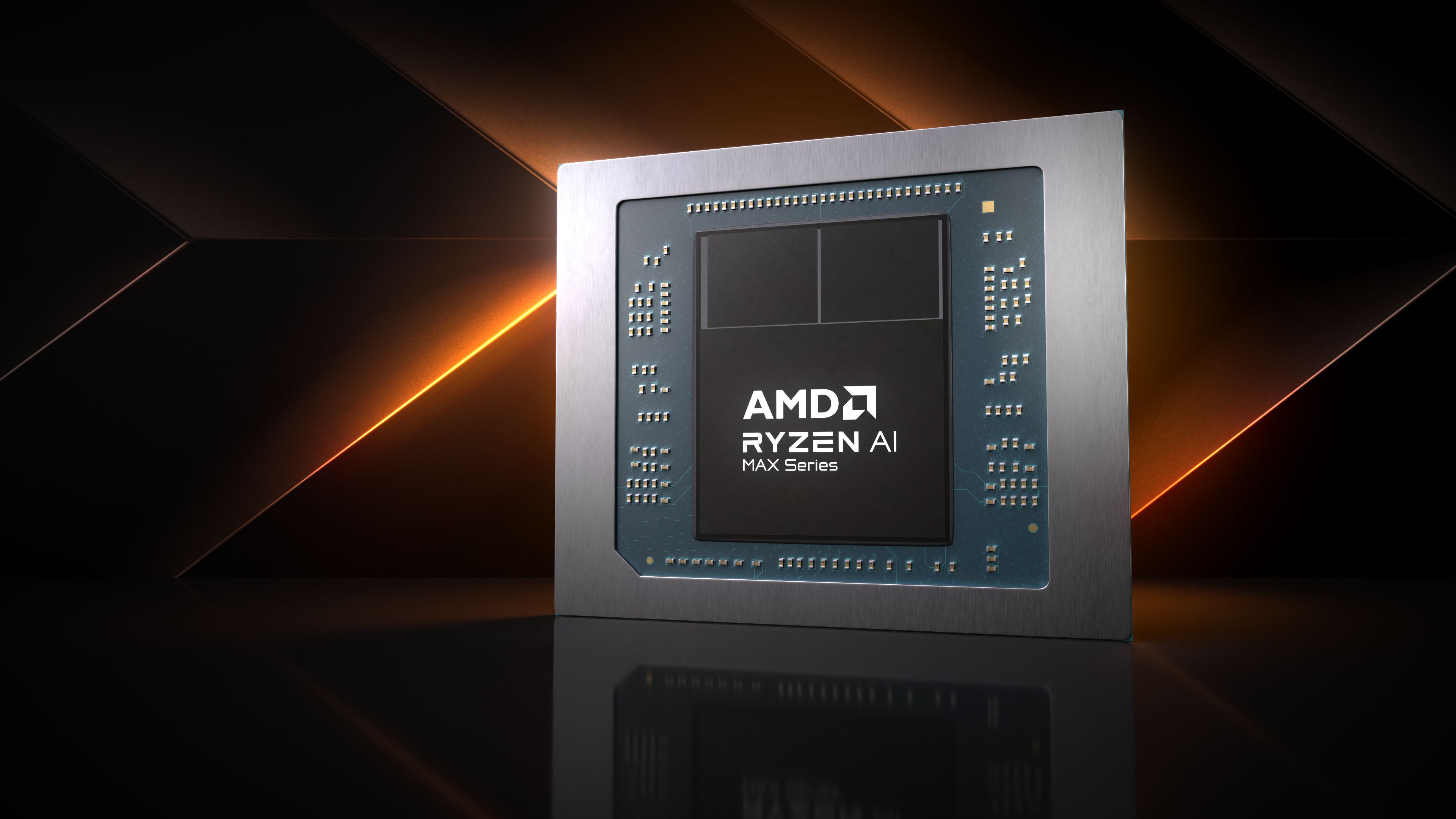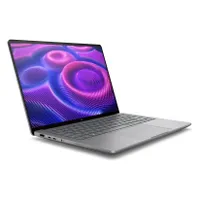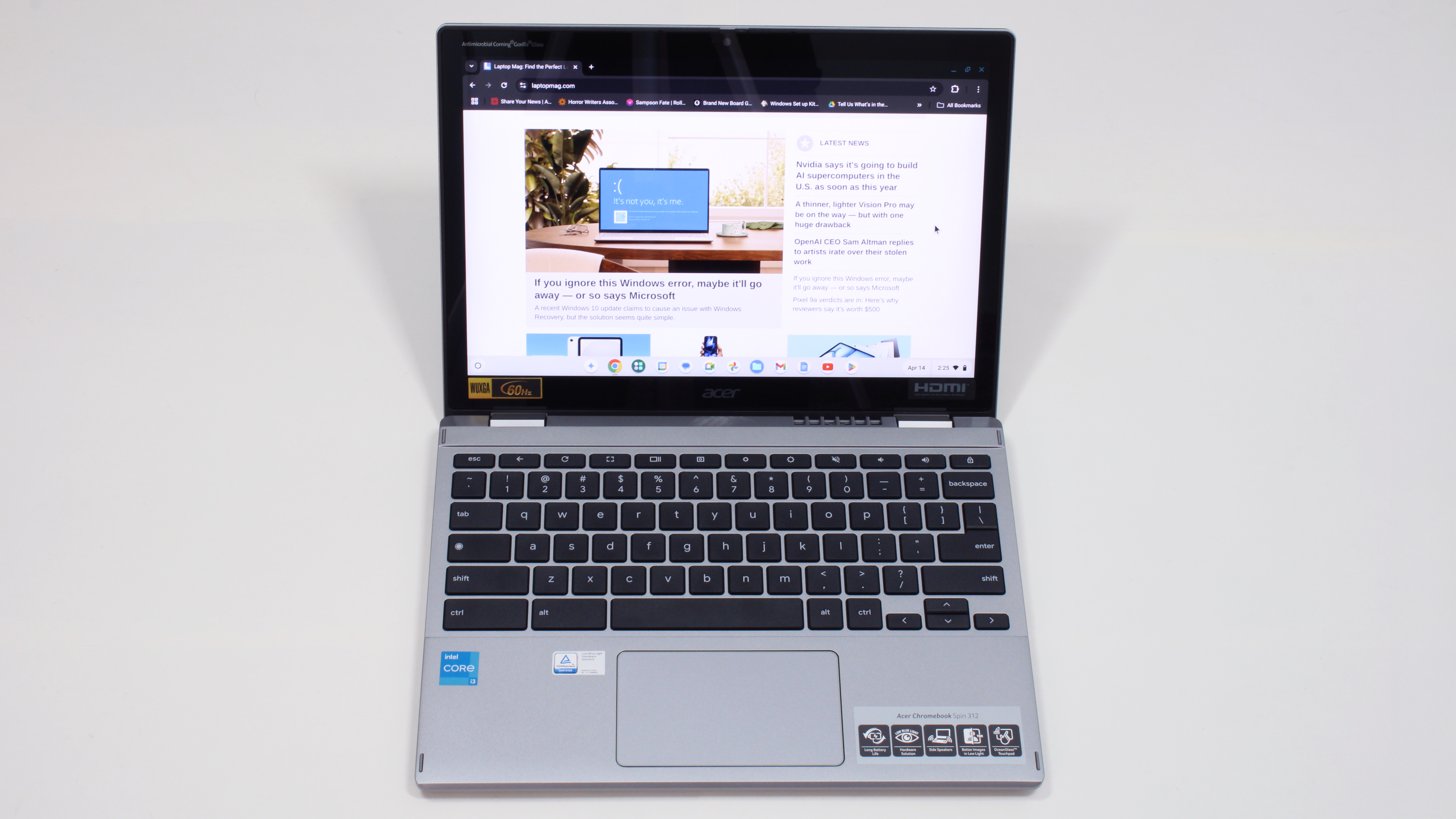AMD Ryzen AI Max Geekbench scores reveal a power drop in 300-series APUs
According to test results uploaded this month to Geekbench, the lower-priced 8-core AMD APU just doesn't have the power. Here's how those results compare to Laptop Mag tests on similar APUs.

Not all laptop chips are created equal, and that's as true of AMD's innovative Ryzen AI Max "Strix Halo" APU as any.
AMD unveiled the Strix Halo APU in January as the Ryzen AI Max 300 series, debuting three consumer chipset variants and four variants made for workstation-class machines.
While we normally expect a large performance gap in between, say, a Ryzen 5 and Ryzen 9. But, with a name like Ryzen AI Max, you may not be expecting such a performance gap between the three APUs in the AI Max series.
An APU, or accelerated processing unit, is a chipset that combines the CPU and an integrated graphics tile. AMD coined the term back in 2011. AMD uses APU for all of its mobile chipsets, from the Ryzen AI Max to the Ryzen AI 300 series.
So far, we've seen only systems powered by the 16-core Ryzen AI Max+ 395 chip, including the Asus ROG Flow Z 13 gaming laptop.
However, the Ryzen AI Max family offers more budget-friendly options, too, from the 12-core Ryzen AI Max 390 down to the 8-core Ryzen AI Max 385.
Last week, we finally saw the 8-core Strix Halo chipset's performance. An HP ZBook Ultra 14 G1a featuring this budget-friendly APU has been benchmarked on Geekbench 6, and the results were uploaded to the Geekbench archives.
Sign up to receive The Snapshot, a free special dispatch from Laptop Mag, in your inbox.
So, how does the 8-core Ryzen AI Max PRO 385 stack up against the 16-core 395? Let's take a look.
AMD Ryzen AI Max 385: Geekbench scores
According to results uploaded to Geekbench on May 27, the HP ZBook Ultra 14 G1a with an AMD Ryzen AI Max PRO 385 APU scored a Geekbench single-core score of 2,489 and a multicore score of 14,136.
We expected these scores to be higher. However, a few factors may explain the larger-than-expected performance gap.
First, there's the hardware matchup (8 cores vs. 16). The Ryzen AI Max PRO 385 also has a lower max frequency than the flagship, which could explain the dip in single-core performance.
The difference in RAM between the HP ZBook Ultra configuration Laptop reviewed and the ZBook scores uploaded to Geekbench could also be behind the score differences, as RAM affects how Geekbench scores are calculated.
Our take: It has long battery life, a sharp, bright display, solid speakers, and incredible performance and graphics.
Specs: Windows 11 Pro, AMD Ryzen™ AI Max+ PRO 395 (up to 5.1 GHz max boost clock, 64 MB L3 cache, 16 cores, 32 threads), 64 GB memory; 2 TB SSD storage, 14" diagonal 2.8K touch display, AMD Radeon™ 8060S Graphics.
| Header Cell - Column 0 | Geekbench's HP ZBook Ultra 14 G1a (Ryzen AI Max PRO 385) | Laptop Mag's HP ZBook Ultra 14 G1a (Ryzen AI Max+ PRO 395) | Laptop Mag's Asus ROG Flow Z13 (Ryzen AI Max+ 395) |
|---|---|---|---|
Geekbench 6 Single-core (Higher is better) | 2,489 | 2,837 | 2,995 |
Geekbench 6 Multicore (Higher is better) | 14,136 | 17,721 | 19,457 |
AMD Ryzen AI Max: Full specs
Chipset | CPU cores | CPU threads | GPU cores | Max GHz | Cache | NPU | cTDP |
|---|---|---|---|---|---|---|---|
Ryzen AI Max+ 395 | 16 cores | 32 threads | 40 cores | 5.1GHz | 80MB | 50 TOPS | 45-120W |
Ryzen AI Max 390 | 12 cores | 24 threads | 32 cores | 5.0GHz | 76MB | 50 TOPS | 45-120W |
Ryzen AI Max 385 | 8 cores | 16 threads | 32 cores | 5.0GHz | 40MB | 50 TOPS | 45-120W |
Ryzen AI Max+ PRO 395 | 16 cores | 32 threads | 40 cores | 5.1GHz | 80 MB | 50 TOPS | 45-120W |
Ryzen AI Max PRO 390 | 12 cores | 24 threads | 32 cores | 5.0GHz | 76MB | 50 TOPS | 45-120W |
Ryzen AI Max PRO 385 | 8 cores | 16 threads | 32 cores | 5.0GHz | 40MB | 50 TOPS | 45-120W |
Ryzen AI Max PRO 380 | 6 cores | 12 threads | 16 cores | 4.9GHz | 22MB | 50 TOPS | 45-120W |
What does this mean for the Ryzen AI Max 385?

While the Ryzen AI Max 385 and its professional variant will still be interesting chipsets — as both still feature the larger Radeon 8060S integrated graphics tile — these early benchmarks clarify a few things.
- The Ryzen AI Max 300 series starts at 385 and tops out at 395.
- The Ryzen AI 300 Strix Point series starts with the Ryzen AI 9 365 and tops out with the Ryzen AI 9 HX 375.
- The Ryzen AI 7 350 and Ryzen AI 5 340 are both technically on AMD's Krackan Point architecture.
Based on AMD's naming convention, the Ryzen AI Max 300 is designed to sit directly atop the Ryzen AI 300 series. So, as the entry-level Ryzen AI Max chip, the 385's Geekbench scores are just above what we've seen from the top end of the Ryzen AI 300 series.
We're not certain yet how expensive the Ryzen AI Max 385 will be compared to its slightly less powerful Ryzen AI 300 series counterparts, as only two Ryzen AI Max systems are on the market so far.
The HP ZBook Ultra with the Ryzen AI Max 385 starts at $2,599. Meanwhile, the Asus ROG Flow Z13 doesn't have a Ryzen AI Max 385 variant but costs $2,099 for the slightly more powerful Ryzen AI Max 390 chipset.
But based on those prices, you are paying quite a bit more for the Ryzen AI Max chipset and its more powerful Radeon 8060S iGPU.
The real question is, is the Ryzen AI Max worth its high price tag? Right now, that's still up for debate.
More from Laptop Mag
- Why Apple’s next macOS might signal a shift. Here's why
- A 1mm fan inside your laptop's hard drive? Here's how the micro xMEMS fan works
- Don't buy an Nvidia RTX 5060 laptop, wait for the RTX 5050

A former lab gremlin for Tom's Guide, Laptop Mag, Tom's Hardware, and TechRadar; Madeline has escaped the labs to join Laptop Mag as a Staff Writer. With over a decade of experience writing about tech and gaming, she may actually know a thing or two. Sometimes. When she isn't writing about the latest laptops and AI software, Madeline likes to throw herself into the ocean as a PADI scuba diving instructor and underwater photography enthusiast.
You must confirm your public display name before commenting
Please logout and then login again, you will then be prompted to enter your display name.

